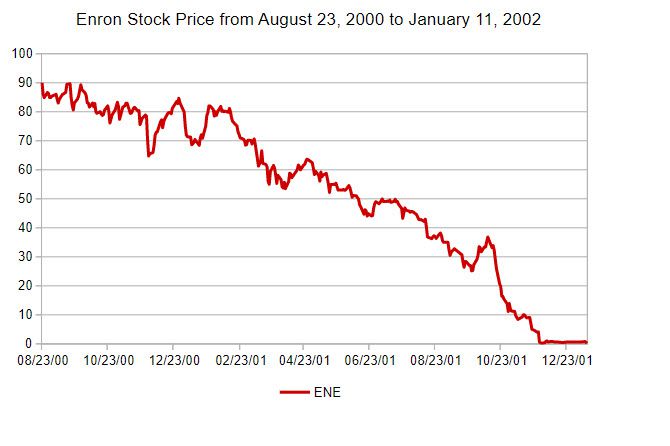The Metropolitan Museum Of Art's "Monstrous Beauty": A Feminist Look At Chinoiserie

Table of Contents
Deconstructing Chinoiserie: A History of Cultural Exchange and Appropriation
The Origins of Chinoiserie: Tracing its Roots
Chinoiserie, the European imitation and interpretation of Chinese and East Asian artistic styles, emerged from a long and complex history of interaction between Europe and Asia. This "cultural exchange," however, was far from equitable.
- Unequal Power Dynamics: The origins of Chinoiserie are inextricably linked to European colonialism and the unequal power dynamics inherent in the relationship between Europe and Asia. The desire for exotic goods and artistic styles fueled a process of appropriation, often lacking genuine understanding or respect for the original cultural context.
- Key Historical Figures and Movements: The 17th and 18th centuries saw a surge in Chinoiserie's popularity, fueled by figures like the Jesuits who brought back East Asian art and design from their missions, and artistic movements like Rococo, which incorporated Chinoiserie elements with gusto. This fascination, however, often masked a fundamental misunderstanding of Chinese culture and its complexities.
- Artistic Appropriation: The process of creating Chinoiserie involved not only imitating styles but also selectively reinterpreting and adapting them to fit European tastes and sensibilities. This process inherently involved a power imbalance, with European artists and patrons shaping the narrative and ultimately controlling the representation of East Asian art and culture.
The Female Gaze in Chinoiserie: Analyzing the Representation of Women
The representation of women in Chinoiserie art is a crucial element for feminist analysis. Often portrayed as exotic, submissive, or hyper-sexualized figures, these depictions reflect the prevailing societal biases of the time.
- Orientalism and Exoticism: Chinoiserie art frequently deployed Orientalist tropes, portraying women as mysterious, alluring, and inherently "other." This "exoticism" served to reinforce existing power structures and reinforce European assumptions about Asian women.
- Gender Roles and Submissiveness: Many depictions of women in Chinoiserie art emphasized their passivity and submissiveness, reflecting and reinforcing traditional European gender roles. These images rarely depicted agency or empowerment.
- Examples from the Met Exhibition: A critical examination of the female figures portrayed in "Monstrous Beauty" is essential to understanding the nuances of their representation. Analyzing these depictions through a feminist lens helps uncover the underlying assumptions and biases within the artwork.
"Monstrous Beauty": Challenging Traditional Narratives
The Exhibition's Curatorial Approach: A Critical Analysis
The Metropolitan Museum of Art's "Monstrous Beauty" attempts to present a more nuanced view of Chinoiserie than previous exhibitions. However, its success in fully addressing the problematic aspects of this historical trend remains debatable.
- Contextualization of Artifacts: The exhibition's curatorial choices regarding the selection and contextualization of artifacts are key to its success or failure. A strong emphasis on historical context and critical analysis is essential for a responsible presentation of Chinoiserie.
- Addressing the Problematic Aspects: The exhibition's ability to openly acknowledge and critically engage with the cultural appropriation and power imbalances inherent in Chinoiserie will determine its lasting impact. A failure to adequately address these issues diminishes the exhibition's value.
- Metropolitan Museum of Art Exhibition's Success: A key question is whether the exhibition successfully balances the aesthetic appreciation of Chinoiserie with a critical examination of its complex history and consequences.
Feminist Interpretations: Reframing Chinoiserie
A feminist perspective offers crucial tools for reinterpreting Chinoiserie art. It challenges traditional interpretations and highlights the often-overlooked agency and resilience of the women depicted.
- Alternative Perspectives: By examining the artwork through a feminist lens, we can uncover hidden narratives and alternative readings that challenge the dominant narratives imposed by European perspectives.
- Agency and Resistance: Even within a biased framework, feminist analysis can identify subtle forms of agency and resistance within the portrayal of women in Chinoiserie.
- Challenging Orientalist Tropes: A feminist approach actively challenges the stereotypical depictions embedded within Orientalist tropes, offering counter-narratives and emphasizing the diversity of women's experiences.
Beyond the Exhibition: The Ongoing Conversation on Chinoiserie and Cultural Sensitivity
The Relevance of Chinoiserie Today: Contemporary Debates
The impact of Chinoiserie extends far beyond the historical period it originated in. The legacy of Chinoiserie continues to influence contemporary art and culture, raising important questions about cultural appropriation and representation.
- Cultural Appropriation in Contemporary Art: Current debates surrounding cultural appropriation highlight the ethical implications of borrowing and reinterpreting cultural elements from marginalized communities. The ongoing dialogue surrounding Chinoiserie offers a valuable lens for these contemporary debates.
- Representation and Diversity: The call for greater diversity and inclusivity in the arts demands a critical reevaluation of past practices, including the historical legacy of Chinoiserie. Contemporary artists are engaging with these complexities in innovative ways.
- Contemporary Art's Response: Many contemporary artists are now engaging with Chinoiserie in new and meaningful ways, using it as a starting point to explore themes of cultural hybridity, power dynamics, and identity.
The Future of Chinoiserie Studies: Promoting Inclusive Perspectives
Moving forward, a more critical and nuanced understanding of Chinoiserie is necessary. This requires promoting respectful dialogue and collaborative approaches to cultural heritage.
- Academic Research and Critical Discourse: Further academic research is vital for a more complete understanding of the nuances of Chinoiserie's impact, including the experiences of Asian women.
- Inclusive Curatorial Practices: Museums and other cultural institutions must adopt more inclusive curatorial practices, ensuring a diversity of voices and perspectives in the presentation and interpretation of Chinoiserie art.
- Responsible Dialogue and Cultural Exchange: Engaging in responsible and respectful dialogue surrounding Chinoiserie is crucial for fostering genuine cultural understanding and collaboration.
Conclusion: A Feminist Reflection on "Monstrous Beauty" and the Future of Chinoiserie
This article has explored the Metropolitan Museum of Art's "Monstrous Beauty" exhibition through a feminist lens, revealing the complex interplay of power, appropriation, and representation inherent in Chinoiserie. By recognizing the problematic aspects of this historical exchange while appreciating its artistic merits, we can develop a more nuanced understanding of its legacy. The exhibition serves as a crucial starting point for a vital conversation, compelling us to confront the historical injustices and promote more inclusive and respectful approaches to cross-cultural artistic engagement. We urge you to visit the "Monstrous Beauty" exhibition at the Metropolitan Museum of Art and continue engaging in critical discussions about Chinoiserie and its impact, utilizing a feminist perspective to further our understanding of this complex artistic movement and its implications for contemporary art and cultural sensitivity. Seek out further resources and scholarly works on Chinoiserie and feminist art history to broaden your understanding of this multifaceted topic. Let's ensure future examinations of Chinoiserie incorporate more inclusive and responsible approaches to cultural heritage, embracing the lessons of "Monstrous Beauty" to foster a more equitable future for artistic appreciation and cultural exchange.

Featured Posts
-
 U S Dollar Performance Under Scrutiny A Comparison To Nixons Presidency
Apr 28, 2025
U S Dollar Performance Under Scrutiny A Comparison To Nixons Presidency
Apr 28, 2025 -
 Rising Gpu Costs A Detailed Analysis
Apr 28, 2025
Rising Gpu Costs A Detailed Analysis
Apr 28, 2025 -
 Bubba Wallaces Texts From Michael Jordan Two Messages He Always Receives
Apr 28, 2025
Bubba Wallaces Texts From Michael Jordan Two Messages He Always Receives
Apr 28, 2025 -
 Cassidy Hutchinson January 6th Testimony And Upcoming Memoir
Apr 28, 2025
Cassidy Hutchinson January 6th Testimony And Upcoming Memoir
Apr 28, 2025 -
 Us China Trade War Partial Tariff Relief For American Products
Apr 28, 2025
Us China Trade War Partial Tariff Relief For American Products
Apr 28, 2025
Latest Posts
-
 Phoenix Nascar Race Wallaces Crash Attributed To Brake Malfunction
Apr 28, 2025
Phoenix Nascar Race Wallaces Crash Attributed To Brake Malfunction
Apr 28, 2025 -
 Brake Problems Lead To Bubba Wallace Crash In Nascar Phoenix Race
Apr 28, 2025
Brake Problems Lead To Bubba Wallace Crash In Nascar Phoenix Race
Apr 28, 2025 -
 Bubba Wallace Suffers Brake Failure Crashes At Phoenix Raceway
Apr 28, 2025
Bubba Wallace Suffers Brake Failure Crashes At Phoenix Raceway
Apr 28, 2025 -
 Nascar Phoenix Race Bubba Wallace Hits Wall Due To Brake Issue
Apr 28, 2025
Nascar Phoenix Race Bubba Wallace Hits Wall Due To Brake Issue
Apr 28, 2025 -
 Bubba Wallaces Brake Failure Causes Phoenix Crash
Apr 28, 2025
Bubba Wallaces Brake Failure Causes Phoenix Crash
Apr 28, 2025
